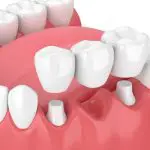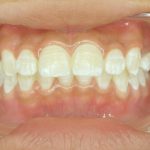Shark Teeth Revealed: How Much Teeth Do Sharks Have?

Sharks are one of the most fascinating creatures living in our oceans. These apex predators have been around for millions of years and have evolved to become one of the most efficient hunters in the world. One of the most fascinating aspects of sharks is their teeth. Sharks have a reputation for being the ultimate killing machine, and their teeth are a big part of that. But how many teeth do sharks actually have, and what do they use them for? In this article, we will explore the fascinating world of shark teeth and uncover some surprising facts about these amazing predators. There are over 500 species of sharks, ranging in size from just a few inches to over 40 feet long. While their size and shape vary greatly, one thing that all sharks have in common is their teeth. Sharks teeth are one of the most unique features of these fascinating creatures. They are designed to be razor-sharp and are constantly replaced throughout their lifetime. Some species of sharks can go through as many as 50,000 teeth in their lifetime! But why do sharks have so many teeth, and what makes them so special? In the following sections, we will explore these questions and more as we dive into the world of shark teeth.
Sharks are one of the most fascinating creatures in the ocean, and their teeth are just as intriguing. Unlike humans, sharks have multiple rows of teeth that are constantly being replaced throughout their lifetime. This means that a single shark can lose thousands of teeth in its lifetime, and some species can even regrow their teeth in as little as one day. Shark teeth are also unique in their shape and size, with each species having a distinct tooth structure that is perfectly adapted to their specific diet and hunting habits. From the serrated teeth of the great white shark to the flat, crushing teeth of the hammerhead, the diversity of shark teeth is truly remarkable and a subject of great interest to scientists and shark enthusiasts alike.
Understanding shark teeth is crucial in comprehending the behavior, diet, and ecology of sharks. The morphology, arrangement, and type of teeth can provide valuable information on the feeding habits of sharks. For instance, the shape of the teeth can indicate whether a shark is a predator or a scavenger. Moreover, understanding how sharks use their teeth can help us understand how they hunt and capture their prey. Additionally, studying shark teeth can also provide insights into the evolution and diversification of shark species. Therefore, by examining the teeth of sharks, we can gain a better understanding of these fascinating and misunderstood creatures, which can ultimately help us to protect and conserve them.
Anatomy of Shark Teeth

Sharks are known for their sharp and powerful teeth. Their teeth are an important part of their anatomy, which helps them to catch and eat their prey. Sharks have multiple rows of teeth, with each row having several teeth. The number of teeth in a shark’s mouth varies depending on the species. Some sharks can have as few as 50 teeth, while others can have up to 300 teeth. The teeth of a shark are not fixed in their jaws like human teeth. Instead, they are attached to the jaw by a membrane that allows them to move forward and backward. This enables sharks to replace lost or damaged teeth quickly. As a result, sharks are constantly shedding and regrowing teeth throughout their lives. Sharks have a unique ability to regenerate their teeth, which makes them one of the most efficient predators in the ocean. The shape and size of shark teeth vary depending on the species and their diet. For example, the teeth of a Great White Shark are triangular and serrated, which enables them to tear through the flesh of their prey. On the other hand, the teeth of a Hammerhead Shark are flat and wide, which allows them to crush the shells of their prey.
Shark teeth come in various shapes and sizes depending on the type of shark. For instance, the great white shark has triangular teeth with serrated edges, which are perfect for catching fast-moving prey. The hammerhead shark has flat, wide teeth that are ideal for crushing and grinding hard-shelled prey. The tiger shark has large, curved teeth that work like a saw to tear through flesh and bone. The bull shark has small, sharp teeth that allow it to grip and tear apart its prey easily. Additionally, some sharks have multiple rows of teeth that are constantly replaced throughout their lifetime, while others have fewer teeth that are replaced less frequently. Regardless of the type of shark, their teeth are perfectly adapted to help them catch and consume their prey.
The location of teeth in a shark’s mouth is crucial for their function. Sharks have multiple rows of teeth that are continuously replaced throughout their lifetime. The teeth at the front of the mouth are designed to grip and tear prey, while the teeth in the back are used to crush and grind. The teeth are also angled to point inwards, towards the throat, allowing the shark to easily swallow their prey whole. The shape and size of the teeth vary depending on the shark’s diet, with some sharks having sharp, pointed teeth for catching fish, and others having large, flat teeth for crushing shellfish. The location and design of shark teeth are a testament to the incredible adaptability and evolution of these apex predators.
Sharks are known for their sharp teeth and powerful bite, but did you know that different species of sharks have unique teeth adaptations? For example, the great white shark has serrated teeth that are perfect for tearing through tough prey like seals and sea lions. The hammerhead shark has flattened teeth that are ideal for crushing the shells of crabs and lobsters. The cookiecutter shark has small, triangular teeth that are designed to latch onto its prey and then twist and turn to remove a chunk of flesh. And the tiger shark has teeth that are shaped like saw blades, allowing it to easily slice through the tough skin of sea turtles and other prey. These adaptations are just a few examples of how diverse and specialized shark teeth can be.
How Many Teeth Do Sharks Have?

Sharks are known for their sharp teeth and powerful jaws that allow them to tear through their prey with ease. But just how many teeth do sharks have? The answer may surprise you. Sharks are actually equipped with multiple rows of teeth, with some species having up to 50 rows of teeth at any given time. These teeth are arranged in a conveyor belt-like system, with new teeth constantly growing and replacing old ones that fall out or get damaged. Shark teeth also come in a variety of shapes and sizes, depending on the species and their feeding habits. Some sharks, such as the great white, have large, serrated teeth that are designed for tearing through tough prey like seals and sea lions. Others, like the hammerhead shark, have flatter teeth that are better suited for crushing and grinding crustaceans and other hard-shelled prey. Despite this diversity, all shark teeth are designed to be razor-sharp and highly effective at catching and killing their prey. Overall, the teeth of sharks are a fascinating example of how evolution has produced some of the most efficient and deadly predators in the ocean.
Sharks are known for their razor-sharp teeth, which they use to capture their prey. But have you ever wondered how many teeth they have and how they replace them? Well, the answer may surprise you. Sharks have multiple rows of teeth, with some species having up to 50 rows. They can have anywhere from 5 to 15 teeth in each row, and some larger species can have as many as 300 teeth at once. What’s even more fascinating is that sharks are constantly losing and replacing their teeth. As they lose a tooth, a new one grows in its place. This process can happen as frequently as every week, depending on the species. So, the next time you come across a shark tooth, remember that it’s just one of many that the shark has and will continue to replace throughout its lifetime.
Sharks are renowned for their sharp and jagged teeth, which allow them to efficiently catch and consume their prey. However, what many people may not realize is that sharks lose and replace their teeth on a regular basis. In fact, some species of sharks can lose and replace up to 50,000 teeth in their lifetime! The rate at which sharks lose and replace teeth varies depending on the species, with some losing and replacing teeth every few weeks, while others can go several months between losing and replacing teeth. This unique adaptation ensures that sharks always have a fresh set of teeth to hunt and consume their prey effectively.
Tooth replacement is an essential aspect of a shark’s survival as it allows them to continue hunting and consuming prey. Sharks have multiple rows of teeth that are constantly being replaced throughout their lifetime. In fact, some sharks can lose thousands of teeth in a single year. This ability to replace lost teeth ensures that sharks always have a sharp and functional set of teeth to capture and tear apart their prey. Without this mechanism, sharks would be unable to eat and would eventually starve to death. Thus, tooth replacement is a crucial factor in maintaining the ecosystem and the survival of these apex predators.
Shark Teeth in Popular Culture

Shark teeth have long been a fascination for humans, appearing in various forms of popular culture. From jewelry to tattoos, shark teeth have become a symbol of strength, fearlessness, and even beauty. In Polynesian culture, shark teeth have been used for centuries in jewelry and weapons, representing power and protection. In modern times, shark tooth necklaces and bracelets have become a popular fashion trend, often worn as a statement piece or a reminder of strength and resilience. Shark teeth have also made their way into popular media, particularly in movies and television shows. The 1975 blockbuster hit \Jaws\ featured a great white shark with a mouth full of razor-sharp teeth, terrorizing a small beach town. The iconic image of the shark’s gaping mouth full of teeth has become ingrained in popular culture, sparking a fascination with sharks and their teeth. Today, sharks are often portrayed as fierce predators with rows of teeth that can tear through anything in their path. This portrayal has contributed to the fear and misunderstanding surrounding sharks, leading to their demonization and endangerment.
Shark teeth have played a significant role in popular culture, especially in movies and television shows. These teeth have been used to depict the ferocious nature of sharks and their potential danger to humans. In movies such as Jaws, the rows of sharp teeth have been used to create suspense and fear, making sharks one of the most feared creatures in the ocean. Additionally, shark teeth have also been used in jewelry making, with people wearing them as pendants or earrings to show their love for the ocean and its inhabitants. Overall, shark teeth have become an iconic symbol associated with sharks, and their portrayal in popular culture has helped to raise awareness about these fascinating creatures.
The portrayal of sharks and their teeth in media and pop culture has greatly influenced the public’s perception of these creatures. From movies like Jaws to documentaries on Shark Week, sharks are often depicted as vicious, man-eating predators with rows of razor-sharp teeth. This portrayal has led to a common fear and misunderstanding of sharks as dangerous and aggressive animals. Additionally, the emphasis on their teeth in these portrayals has further perpetuated this fear, as the teeth are seen as the primary weapon of the shark. However, in reality, sharks are a vital part of the ocean’s ecosystem and should be respected and protected.
The accurate representation of shark teeth in media is crucial in dispelling myths and misconceptions about these fascinating creatures. Sharks are often portrayed as mindless, bloodthirsty killers, and their teeth are depicted as razor-sharp weapons designed solely for attacking humans. In reality, sharks have a wide variety of tooth shapes and sizes, each adapted to their specific diet and hunting style. By accurately representing these teeth in media, we can educate the public about the true nature of sharks and their important role in the marine ecosystem. Furthermore, accurate depictions of shark teeth can help researchers identify the species of shark responsible for attacks, which can aid in conservation efforts and prevent unnecessary fear and persecution of these magnificent animals.
The article \Shark Teeth Revealed: How Much Teeth Do Sharks Have\ explores the fascinating world of shark teeth. It discusses how sharks have multiple rows of teeth that continuously replace themselves throughout their lives, and how their teeth vary in shape and size depending on their diet. The article also reveals that sharks can have up to 50,000 teeth in their lifetime and that their teeth are made of a special material that is stronger than human teeth. Additionally, the article explains how scientists can use shark teeth to study the behavior and evolution of these fascinating creatures. Overall, the article sheds light on the diverse and impressive world of shark teeth and the important role they play in the lives of sharks.
Understanding shark teeth is crucial for both scientific research and public perception of sharks. Shark teeth provide valuable information regarding the evolution, ecology, and behavior of these apex predators. By studying the shape, size, and structure of shark teeth, scientists can learn about the feeding habits and dietary preferences of different shark species. This information is essential for the conservation and management of shark populations, as well as for developing effective shark attack prevention strategies. Moreover, educating the public about shark teeth can help dispel common myths and misconceptions about sharks, and promote a better understanding and appreciation of these magnificent creatures.
Conclusion

In conclusion, the teeth of sharks are one of the most fascinating and unique features of these magnificent creatures. With an average of 50 rows of teeth and the ability to replace lost teeth throughout their lives, sharks are truly remarkable in their dental anatomy. However, it is important to remember that these teeth are not just for show – they play a crucial role in the shark’s survival and dominance in the ocean’s food chain. As we continue to learn more about these apex predators, we can only marvel at the intricacies of their design and the sheer power they possess.







